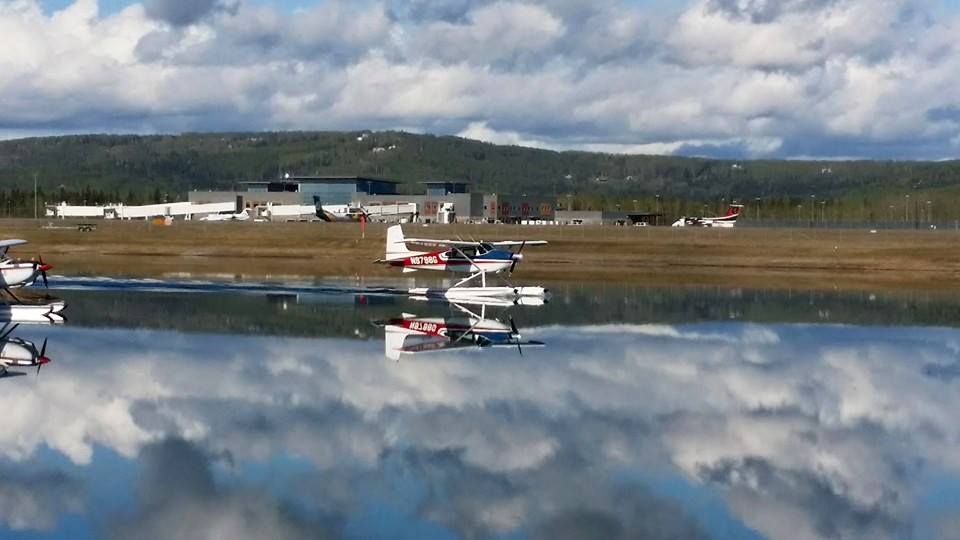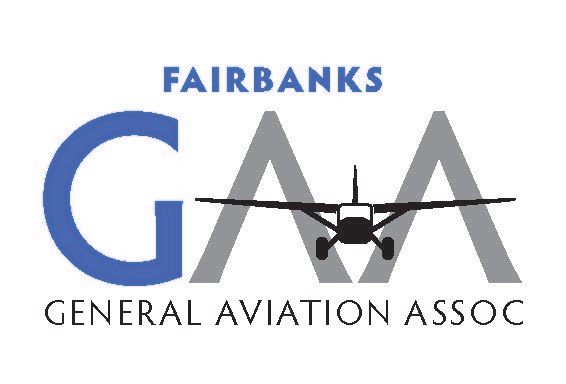Frequently Asked Questions

What is this Tersa (TRSA) departure that I keep hearing when getting my taxi clearance? (8/22)
Fairbanks International Airport resides inside a Terminal Radar Service Area (TRSA). The FAA has defined a procedure for VFR aircraft called the TRSA Departure. When assigned the TRSA departure, aircraft are expected to fly the runway heading and contact Departure Control on 125.35 when handed off by Tower Controller. When checking in with Departure, state your altitude and altitude climbing to. (i.e. Cessna1234X, 900 climbing 3,000).
TRSA services provide voluntary traffic advisories to arriving and departing traffic, but it is not mandatory to participate. ATC assumes you will be receiving TRSA services. If you do not want TRSA service, state “negative TRSA” on initial call to Clearance Delivery. We highly encourage its use for traffic avoidance in the Fairbanks area. See the Fairbanks Pilot Bulletin for details.
What is a frequent flyer squawk code and how do I get one? (8/22)
If you fly frequently in the Fairbanks area you may request a unique transponder code to your aircraft. This allows ATC to know who you are by just the transponder code without any radio communication. You may request a frequent flyer code from the ATC tower at Fairbanks 474-0050.
Once you have been assigned a code, on your initial call to Clearance Delivery/Ground or Approach, state “frequent flyer” (not the digits) after you say your tail number and they will immediately know who you are, and you won’t be assigned a squawk code.
What is Pond 2 and Ski 2? (8/22)
Fairbanks has four parallel runways, including two paved surfaces, a gravel runway, and a float pond. Pond 2 is short for being assigned to land or depart on float pond runway 2W and Ski 2 is short for 2 on the gravel runway, referred to as the “Ski Strip”. See the charts for the location of these runways. The Ski Strip is in-line with Runway 2R and is used for wheel planes in the summer and maintained as packed snow in the winter for ski equipped aircraft. The traffic patterns for all the runways overlap and are all controlled by the tower. See the Fairbanks Pilot Bulletin (link to be provided) for details.
Do commercial aircraft get a preference from ATC? (8/22)
No. But ATC will work with faster aircraft to get them sequenced as they have more constraints. Commercial aircraft also tend to be very predictable, so it is easy for ATC to handle them first to give more room for private aircraft operations which are more variable.
Why do Special VFR aircraft have to wait so long? (8/22)
IFR aircraft have priority in low visibility/ceiling conditions. VFR traffic must wait until adequate VFR to IFR separation is achieved in the Class D airspace. When the airspace is busy with IFR traffic, VFR traffic may have to wait. Only one VFR aircraft is allowed in Class D airspace when IFR conditions prevail. If weather improves to VFR conditions, the tower will move VFR traffic out/in quickly.
Where are Fouts/Hagglands/ etc. that I hear on the ATC frequencies? (8/22)
These are private airstrips that are not charted but that have enough traffic that ATC knows their location. See the Fairbanks Tower Bulletin (link to be provided) for details. If you hear a traffic call, and are not familiar with the location given, ask for a point out.
What does it mean to land at your own risk on a NOTAM closed ski strip or float pond? (8/22)
When these surfaces have not been prepared or inspected by the airport, they are NOTAM- closed. The pilot may be allowed to land at their own risk on the surface. A go around may be prudent if the pilot deems the surface unacceptable and they should advise ATC. When departing from a NOTAMed closed surface, ATC will not issue a formal take off clearance, but you must establish contact with ATC prior to takeoff.
Why am I sometimes asked to squawk VFR in the pattern?
The tower controllers have a radar scope to assist them in managing the traffic around the airport. When you are squawking an assigned code, it puts a big data tag up on scope and it can get very cluttered with multiple aircraft in the traffic pattern. If you squawk VFR, you are just a dot and the screen is easier to read. Good practice is to squawk VFR if you are staying in a closed traffic pattern, if not issued a different squawk code by ATC.
Resume own nav? (8/22)
Resume own navigation. You can proceed as you like to your originally cleared arrival or departure. The radar controllers usually issue this to cancel a previous instruction that limited you to avoid traffic. It means you can continue doing as you like in altitude, heading and maneuvering.
Why does the ground controller ask for a magnetic heading when I depart the area? (8/22)
Radar controllers use a heading to manage traffic flow in the area. If you wish to maneuver freely, such as on a town tour, state your initial heading and advise that you would like to maneuver in a given area. Provide the controllers with new general headings when you change to go to other areas.
Why am I not given a transponder code when departing to North Pole area airports? (8/22)
Generally, you are given a turn out on course to the east and then released to Ladd Tower when open or Ladd CTAF advisory when closed. You can then proceed uncontrolled into Bradley, Airway, Lakewood etc. When returning to Fairbanks, it is best to contact Fairbanks approach well outside the Ladd class D airspace and request landing at Fairbanks. Approach will coordinate with Ladd for the transition through their airspace.
Do you have a Flight Service Station on the field? (8/22)
Yes, Fairbanks is one of only three airports in the state that has a full time, 24 hour/day flight service station located across South University Avenue from the Control Tower. Assuming COVID restrictions allow staff there provides face-to-face weather briefings, and has numerous handouts and informational literature, such as the Fairbanks Pilot Bulletin, with information on the airport and local procedures.
FAI/Operations
Where do I park my aircraft once I land at FAI?
FAI has transient aircraft electrical, non-electrical and float spaces available for daily use for a fee. See the aircraft parking website for more details. For all questions regarding transient parking, please call Del Watkins, Republic Parking 907-455-4571. Bring your own ropes.
What facilities are available for pilot use?
- Pilot Lounge on East Ramp, University Avenue South.
- Airpark Campground, East Ramp, Float Pond Road
Why are so many planes tied down? Can I rent a hangar? (8/22)
Hangar construction is expensive in Alaska. Hangar space for rent is generally not available. Some local businesses may rent hangars for a few hours to perform brief maintenance tasks or thaw aircraft in the winter.
Weather in interior Alaska is unpredictable and there may be high winds or hail that can cause damage to airplanes. Daylight and intense sun only occur for a few months in the summer. Airplanes can survive on tie downs with conscientious care. Abandoned aircraft suffer the effects of being outside without care. Caution should be exercised when buying aircraft that has not been maintained and flown regularly. Contact FAI Leasing to reserve a tie down space at (907) 474-2520, or see the application online.
Where can I find a restroom? (8/22)
- The pilot lounge at the base of the tower has a restroom shower and facilities.
- A portable toilet is located east of Taxiway Delta, opposite row 37.
- A summer/seasonal restroom with running water and a pit toilet is located in the airpark.
- A portable toilet is located in the gravel tie downs by the float pond.
- A portable toilet is located at the south end of float pond road.
What is the East Ramp? (8/22)
The east ramp is roughly defined as all of the ramp area east of Runway 2R/20L and Runway Ski 2/20 and north of taxiway S. This area is a large tie down space for airplanes and is uncontrolled to allow vehicles to get to and from aircraft. Be cautious as pedestrians. See the “Know Before You Go” map for more details. Bring your own ropes for tiedowns.
Where can I move my snow when clearing my tie down? (8/22)
Snow should be placed in a way that does not impede aircraft operations or any neighboring tie down spaces. Do not move snow out into the taxi lanes. Plows, snow blowers, leaf blowers etc. may be used as needed to move snow. Please refer to FAI’s Operational Orders for snow removal guidance, or contact Airport Communications Center at (907) 474-2530, open 24 hours a day.
Where can I take found items on the ramp? (tail cover, pitot cover, fuel strainers, baggage, hats, coats etc.) (8/22)
Call Airport Operations (907) 451-2300 for any found items.
What choices do I have for fuel? (8/22)
Alaska Aerofuel* provides in-wing service by phone or radio. They also provide a fill-up service by putting a red/green sock on your prop, and they will fill at their convenience. Self-serve fuel is available at the base of the tower and south end of float pond road. Float pond and lease lot holders may have fuel tanks on some sites. Refer to your airport lease for requirements. For a more complete listing of fuel providers and FBOs on the airport overall see AOPA.org.
Can I spend the night in a camper at my float pond spot or in my hangar? (8/22)
No. The only place that overnight sleeping is allowed at the airport is at the Airpark located on the north end. Contact Reef Parking to reserve space for overnight stays at (907) 455-4571.
Can I drive my car on the east ramp, float pond road and taxiway T without talking to ATC? (8/22)
The East Ramp, Float Pond Road and Taxiway Tango are all uncontrolled surfaces. Vehicle movements are allowed with no communication. Please always be aware of aircraft operating and give way to aircraft. Aircraft are encouraged to notify ground control before taxiing in these areas to reduce conflicts. See the “Know Before You Go” map for more details.
Do police patrol the east ramp? (8/22)
The Fairbanks International Airport Police and Airport Operations personnel frequently patrol the entire airport including the East Ramp and Float Pond areas. This includes routine contacts during which they may request to see ID.
Please call Airport Dispatch at (907) 474-2530 to report suspicious behavior or 911 for emergencies.
Got a question you want answered? Please share your questions about the airport or operating in the Fairbanks area with us, as a source of potential future FAQ’s. Many questions can be answered by accessing the FAI Website, Airport Operations.

